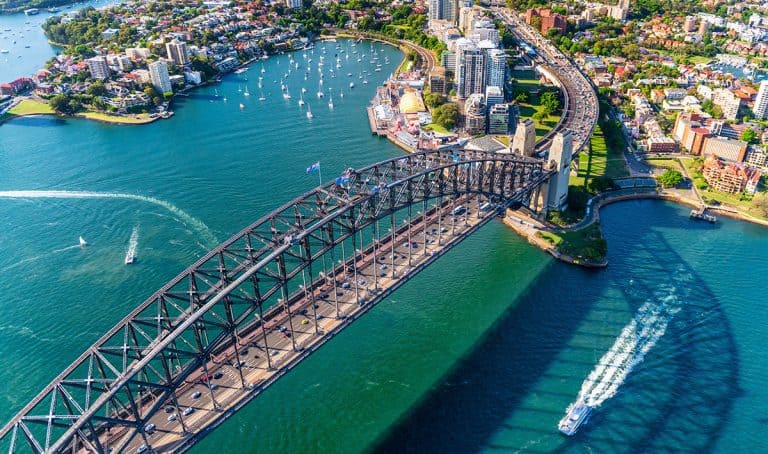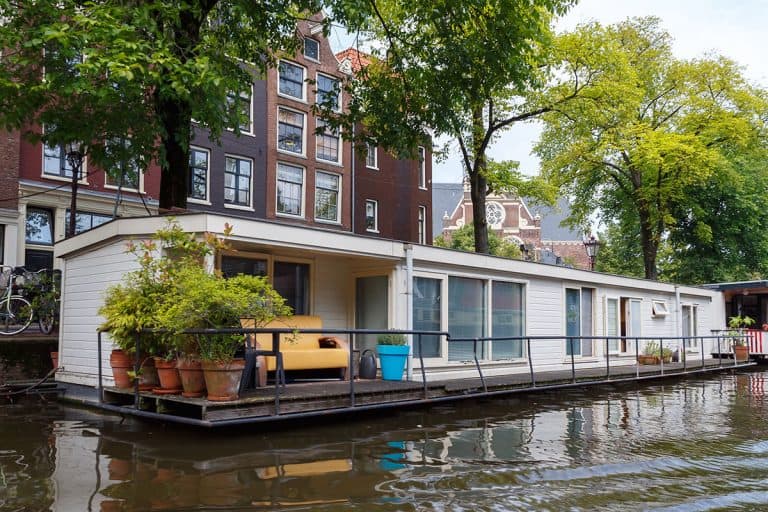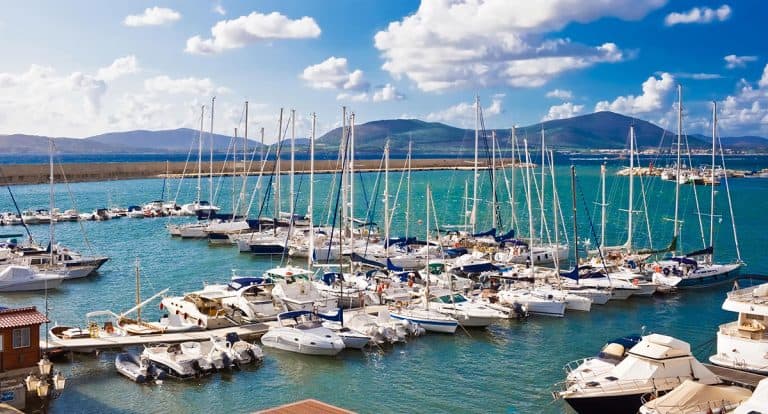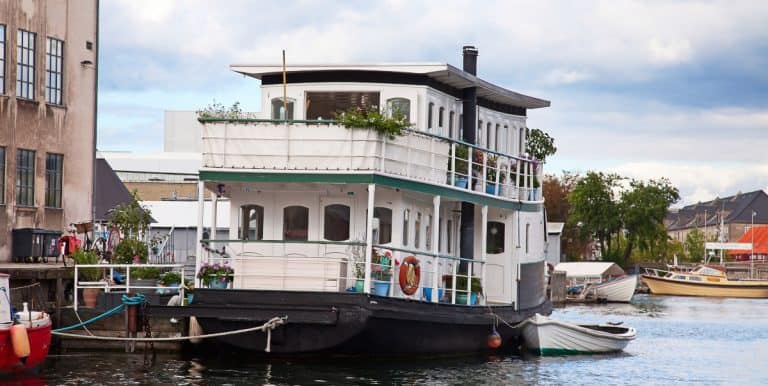Do Houseboats Have Plumbing and Running Water?
Have you ever wondered about life aboard a houseboat, and basic necessities like plumbing and running water? Houseboats have running water and plumbing, just like a regular house.
Houseboats do have plumbing and running water. Houseboats use a pressurized freshwater system to provide water on demand, similar to an RV. An electric pump pulls water from a fresh water tank and routes it through a hot water heater when needed. Houseboats have gray water and black water tanks to hold wastewater. They have a variety of ways to dispose of sewage.
Although houseboats have plumbing and running water similar to an RV, their systems are unique. Keep reading to find out more.
Plumbing and Running Water Systems on a Houseboat
Houseboats have unique plumbing and running water systems aboard to keep you in comfort while enjoying the fresh sea air. Much like an RV, these systems are designed to be flexible and efficient.
As the houseboat cruises through the water, the plumbing has to be able to withstand the rigors of use while underway.
The fresh water system is made up of Pex plumbing, which is
- A flexible plastic tubing that allows for flexing and mobility.
- Used in both RV and houseboat plumbing.
- Easy to work with and install.
Much like an RV, the water source can either come from an internal fresh water pump system that draws water from a tank. Or an external fresh water fill inlet that you hook up to, when docked in a marina.
Water can also be pumped straight from the ocean to an external wash station and used as rinse water for a houseboat toilet.
Houseboats have a unique way to dispose of waste matter. There are two kinds of waste matter. The first kind is gray water. Gray water is
- Any water that gets washed down from kitchen and bathroom sinks.
- All water washed down the shower drain.
- Any other water washed down drains or toilet rinse water, depending on the set up.
The second kind is black water. This is the liquid and solid waste that gets flushed down the toilet. It gets flushed into a sturdy marine plastic holding tank such as this one.
Depending on the size of your boat, you may have two separate tanks installed. One for gray water and one for black water. If you only have one holding tank, it can fill up pretty fast. So be mindful of space conservation.
Disposing of the black and gray water depends on where you are and what kind of disposal system you have installed.
Gray water is considered to be pretty clean and mostly can be emptied straight into the water you’re located on.
If your gray and black water drain into the same tank, then it’s considered mixed and should be properly disposed of. Or you are docked in a harbor or marina, where there very often are strict rules that prohibit emptying gray water into the harbor.
You’ll have to wait to empty your black water tanks until you are moored at a dock, then you’ll probably connect to a waste water disposal system and have the tanks pumped out. This is especially true if you’re on a lake or fresh body of water.
Otherwise, if you’re out to sea and 3 miles away from land, you can dump it straight into the ocean.
How Do You Get Water on a Houseboat?
There are a few ways to get fresh water on a houseboat and to gain access to it via a sink or shower.
- Through an electric on-demand freshwater system that draws water from a freshwater holding tank located on the houseboat whenever needed.
- A manual pump that requires you to turn an electric switch on whenever you need water.
- Through a freshwater fill connection that allows you to connect an external hose while you’re docked.
If you are considering a static or non-cruising houseboat, you connect to water through a freshwater inlet that feeds freshwater directly into your system.
It’s similar to a regular house in that you have fresh city water coming in. It’s possible to have permanent connections and not have to think about the amount of water usage.
If you intend to take your houseboat on the open water, but you also plan on renting a space in a marina to moor for any length of time, you can still connect to the city water through the fresh water inlet.
If you are not directly docked to the pier or you’re planning on putting out to sea, you’ll need to make sure your fresh water holding tank is full. You fill it up using the fresh water inlet.
The fresh water fill point usually has a regulator installed in it and will prevent the tank from overfilling. Depending on the size of your boat, you may need to use your electric water pump to increase the pressure flow.
Many Houseboats Have On-Demand Water Systems
One of the ways you are able to get water on a houseboat is through an on-demand fresh water system.
Having an on-demand system simply means that
- An electric pump keeps the freshwater system pressurized
- Water flows through the faucet as soon you open it
- The pump continually draws water from the fresh water holding tank.
- It shuts off when you close the faucet.
There are several things to consider when looking at an on-demand water system.
- It depends on the size and kind of boat you own or are looking to buy.
- What is the capacity of the water system? This depends on the flow rate, or how fast you need the water to pump out, and how many people you plan on having aboard your boat.
- How many outlets does it need to serve? This includes things like showers and toilets.
- Where will the pump need to be mounted? If you have a non-self-priming pump, then it needs to be located below or at the water level so water is already in the pumping chamber. Otherwise, a self-priming pump can be mounted above the water level.
Like an RV, the size of the boat and the amenities dictate the size and draw of the electric pump, and the size of the fresh water holding tank.
Different Kinds of Fresh Water Holding Tanks
There are different kinds of fresh water storage tanks.
- Square rigid plastic holding tanks.
- Flexible water holding tanks
- Accumulator tanks help with water flow and pressure
Most rigid plastic holding tanks are shaped like a box and designed to fit comfortably in a tight space. On average, they range in size from 15 gallons to 30 gallons. They are made from molded polyethylene and should be kept sanitized.
Some houseboats may be able to accommodate larger tanks depending on the length of your boat. To help smooth the water flow, accumulator tanks have air bladders inside it and are used to help with
- Control over the hot water flow and temperature.
- Reduce the need for the pump to switch on and off
- Saves the battery life from draining too fast
- Lengthens the life of the water pump.
Flexible water holding tanks are used for those hard to reach places or if you have an odd-shaped space. These tanks can hold from 13 to over 50 gallons of water.
They are
- Flexible and light
- A good low-cost solution for a water holding tank
- Reliable and made out of BPA free plastic.
- Have a double envelope, so you can remove the interior lining and clean it.
How to Maintain a Healthy Water System
There are a couple things you can do to maintain a healthy water system on your houseboat.
Make sure to buy freshwater rated hoses. These hoses are specifically designed to bring fresh water on board. When you are filling your fresh water tank, don’t let the hose touch the lake or seawater, as it can compromise the integrity of the hose.
Consider installing a water filter or using an in-line water filter to be doubly sure your water is clean and safe from bacteria.
You can also sanitize your fresh water system by using bleach and water at least twice a year.
Do this by
- Mixing one tablespoon of bleach with a gallon of potable water.
- Pour it into your fresh water tank using a funnel.
- Fill your fresh water tank until it can’t hold any more water.
- Run all faucets and showers and flush the toilets. This gets all the bleach water in every line.
- Let it sit for 24 hours.
- Drain the water.
- Refill the tank with fresh water and run all water outlets.
- Rinse and repeat until the chlorine mix is completely gone from your system.
If you need to winterize your water system, use a specially rated marine antifreeze liquid and use your water pump to pull it through all the water lines. Run your faucets and showers until the liquid comes through.
Keep an eye on water leaking from places it shouldn’t. This could be an indication of a failed part. Replace any worn parts immediately.
Do Houseboats Have Hot Water?
Houseboats have hot water available through special designed hot water heaters, just like a regular house.
It’s nice to have the luxury of taking a hot shower after a long day hanging out at the lake. Just like your regular house, houseboats have specially designed hot water heaters to provide you with that touch of comfort.
The difference is that marine hot water heaters have a much smaller tank capacity than residential houses. Usually the tanks can hold about 6 to 20 gallons of water.
Inside the hot water heater, a small water tank heats up the water with electric coils. With such a limited supply of water, you have to be careful to conserve the hot water.
When you are docked in port, it’s easy to run the hot water tank.
But if you are out to sea and the hot water heater is run off the generator or battery, you’ll have to pay attention to when it’s running and not drain the battery too fast.
Consider using a solar powered battery to help boost the life of your battery.
Some hot water tanks use diesel fuel to run the tank, or send hot engine coolant through the coils to heat them up.
Either way, it’s nice to have the option of a hot shower. Especially if you want to extend your cruising season and stay out longer, even when the weather gets chillier.
Where Does the Poop Go on a Houseboat?
Houseboats have a waste water removal system that is similar to an RV to remove poop.
You should have a gauge in the pilot house which lets you know how full your tanks are. It’s a good idea to keep an eye on it and empty the waste tank when it gets about three quarters of the way full.
The system starts with a holding tank specially designed to keep poop safely separated from the rest of the boat.
Marine waste holding tanks
- Range from 30 to 50 gallons
- Made of thick polyethylene
- Have thick walls.
The waste water plumbing in a houseboat is a combination of PVC pipes and flexible hoses connected with rubber couplers to
- Connect the toilet to the marine waste holding tank
- Connect to an outlet which leads to the outside of the boat to empty the holding tank.
- Connect a vent for sewer gas to the outer hull of the boat.
Sewage holding tanks are held into place with a solid series of metal braces that form a strong box.
Then you add chemicals to treat the poop and other waste. This not only helps break the waste down into a sludge, but keeps the sewage from smelling like sewage.
There Are Different Kinds of Toilets on a Houseboat
On a boat, bathrooms are called heads. There are different kinds of toilets you can have on a houseboat.
All toilets that are installed in boats have a back-flow design built in to keep water or sewage from flooding the compartment or getting backed up.
Macerator toilets can have a dual function pump which both adds water and removes the waste at the same time. It
- Chews up the solids and turns it into slurry.
- Then moves the slurry to the holding tank.
- Saves space in the tank
They can be installed above or below the water line and don’t need extra macerators to dispose of the waste.
The standard marine toilet doesn’t come with fancy bells or whistles. But what it does offer is the option to draw in lake or sea water to flush the toilet.
This system is usually connected with an outdoor water shower and a hose to wash down the boat decks and sides. It’s an excellent way to conserve your fresh water and still have the luxury of a flushing toilet.
The self-priming marine toilet allows you to flush the poop and pee straight overboard or into a holding tank.
Composting toilets are another option aboard your houseboat. The benefit to this is it doesn’t require any plumbing.
This is ideal if you have a much smaller houseboat without a lot of room. Especially if you aren’t going on long trips or living full time in the boat.
- The waste water tank is actually connected to the toilet and is self-contained.
- It requires a very small amount of water to flush
- Is designed to be portable.
The downside, of course, is that you have to haul your poo off the boat and properly dispose of it when you come back to shore.
Make sure to add the proper chemicals to help break down the solids into liquids.
It’s important to conserve water aboard your houseboat since space is limited. A good rule of thumb is:
“If it’s is yellow, let it mellow. If it’s brown, flush it down“
Speaking of toilet paper. Make sure to use a toilet paper rated for marine sewage tanks.
- This is generally 1 to 2-ply toilet paper.
- Anything heavier than a 2-ply toilet paper will clog the waste holding tank and take up space.
- Consider throwing the used toilet paper away in a trash can instead of filling up your waste tank.
This keeps it from getting clogged or bogged down with too much solid waste. If your tank doesn’t have enough liquid, then it won’t drain properly.
Also, make sure to keep any feminine hygiene products from going down the toilet because they will clog up your tanks faster than anything else.
How You Dispose of the Waste on a Houseboat
You have a few different options on how to dispose of the sewage in the waste water holding tank.
You can either
- Pump it out while docked in a marina
- Have a sewage station pump it out, this could happen while docked or with a sewage company that brings the dump station to you while not in port.
- Dump it 3 miles out at sea
How and when you need to dump your tanks depends on the number of people using the facilities and how often you use it. Once you do a couple trips out to sea or spend time on the boat, you’ll figure out how often the tanks need to be emptied.
Marinas will usually have a specific dumping station set up where you can cruise in and dump your tanks. Often times, you’ll have the ability to fill your fresh water tanks at the same time.
When you empty your tanks at the marinas, there will be a backflow prevention device installed to keep sewage from flowing back into the systems. This may slow the process, so just be patient.
- Once you dock the boat, make sure it’s secure to the pier.
- Open the valve or port to your black water waste removal port.
- Retrieve the hose from the marina’s waste water station and turn on the pump.
- Put the hose into the receiving tank port and open the hose.
- Hold it securely against the boat.
- The waste will pump out of your holding tank and into the receiving station.
Dumping your sewage in the ocean seems disgusting, but according to the EPA it’s perfectly legal as long as you are 3 miles away from a shore line.
There is a way to legally dump your sewage within three miles of shore, but it has to be properly treated by EPA approved means via Type 1 or Type 2 marine sanitation devices.
Type 1 marine sanitation devices are flow-through devices and use a combination of treatments. Which includes a macerator pump in a toilet and chemicals like chlorinated tablets.
Type 2 devices use a natural biological process to break the poop down and then is chemically treated with tablets.
Double check with state and county regulations for their specific requirements for dumping. If there’s ever any doubt, just be prepared to use a dump station.
Ways to Conserve Fresh Water on Your Boat
There are things you can do to conserve water on your boat and stretch the fresh water. Even if you use a couple of these ideas, it can go a long way in using what you have more efficiently.
When you are washing dishes, run a full load on the dishwasher. Or if you are washing dishes by hand,
- Fill up one sink part way with soapy water and the other with clean rinse water.
- Wash and rinse dishes until the rinse water is too sudsy and the dish water is dirty.
- Empty the dirty dishwater and use the rinse water as your wash water.
When you are washing your hands or brushing your teeth, turn the water off in between soaping up and rinsing off. Don’t leave it running.
Install a water saver shower head in your shower. This lets you turn the water off while taking a shower. Don’t stand under a full steaming hot shower for fifteen minutes and taking a Hollywood shower.
Instead, consider taking a Navy shower
- Turn the water on and get wet.
- Turn the water off.
- Lather up with soap and shampoo.
- Turn the water on and rinse off.
Make sure that everyone on the boat is familiar with and comfortable using water saving practices. Not only does this conserve your fresh water supply, but it also saves space in your waste water tank.
You Can Turn Seawater into Fresh Water
There is a process known as desalinization that allows you to turn seawater into freshwater. Using reverse osmosis membranes, desalinization systems can be installed on your houseboat to let you stay out on the water longer without having to come in and get fresh water.
Instead you convert the salt water to usable, drinkable water. This special membrane keeps contaminated water and other undesirable materials from getting through. The water is filtered through the membrane under heavy pressure.
This removes up to 99 percent of:
- Salts
- Microorganisms
- Undissolved materials
- Impurities.
Everything that’s filtered out is sent through a drain, back into the ocean.
Purifying Lake Water for Onboard Use
If you spend a lot of time cruising around on bodies of fresh water, you may want to consider purifying lake water to help keep your fresh water supply full.
There are systems you can buy that do the filtration system for you, but they can be cost prohibitive or not large enough to be properly effective.
Cost effective ways of preparing the water would be to have some sort of on-board food grade tank or a water bladder.
The first step in purifying the water is to filter the water before putting it in the tank. You can use an inline water filter for this purpose. And it usually fits on the end of a hose.
The next step is to chlorinate the water.
- You can use pool and spa chlorine tablets or household bleach.
- Make sure to only use what you need, more isn’t better.
- The standard measurement is one tablespoon for every 10 gallons of water.
- If you want to chlorinate tap water, just in case the source is questionable, use one tablespoon for every fifty gallons
- Use a pool test kit to measure the chlorine to make sure you haven’t added too much.
- Don’t overdo the chlorine, as it can shorten the life of your water pumps and pex plumbing.
The last step you take to purify lake water is to use a carbon block filter.
It should be rated to remove giardia and any other lake borne bacteria that could come through the filtration system. These filters should also remove extra chlorine and the chlorinated taste.
By following these steps, you may be able to tap into lake water and refill your fresh water supply.
Search for a Houseboat with the Right Plumbing
When searching for just the right houseboat for your needs, be mindful of the variety of plumbing and freshwater systems available. Having the right plumbing and running water for your needs makes it an enjoyable experience.





